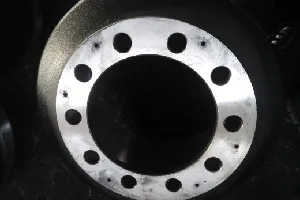list the seven major steps for drum brake service
The Seven Major Steps for Drum Brake Service
Drum brakes are a crucial component of many vehicles, providing reliable stopping power. Over time, these brakes can wear out or become less effective, necessitating regular service to ensure optimal performance. Understanding the process of drum brake service is important for both vehicle owners and mechanics. Here, we outline the seven major steps involved in servicing drum brakes.
Step 1 Safety First
Before starting any service work, it’s essential to ensure safety. Begin by parking the vehicle on a flat, stable surface and engaging the parking brake. Use wheel chocks to prevent the vehicle from rolling. Additionally, it's advisable to wear safety glasses and gloves to protect against debris and chemicals.
Step 2 Remove the Wheel
To access the drum brakes, the first practical step is to remove the wheel. Loosen the lug nuts slightly while the wheel is still on the ground. Once loosened, raise the vehicle using a suitable jack and secure it with jack stands for added safety. Now, fully remove the lug nuts and take off the wheel to expose the drum brake assembly.
Step 3 Inspect the Brake Components
With the wheel removed, conduct a thorough inspection of the brake components. Check the brake drum for any signs of wear such as scoring, cracks, or excessive wear. Inspect the brake shoes for thickness, and assess the condition of the springs, adjusters, and other hardware. If any components appear damaged or excessively worn, they should be replaced before proceeding.
Step 4 Remove the Brake Drum
list the seven major steps for drum brake service

Next, you'll need to remove the brake drum. Most drum brakes will allow access to the mounting hardware that secures the drum in place. Depending on the vehicle, you may need to remove retaining screws or clips. If the drum is stuck due to rust or brake shoe contact, gently tapping it with a mallet or using a brake drum puller can help dislodge it.
Step 5 Replace or Adjust Brake Shoes
Once the drum is removed, you can proceed to replace or adjust the brake shoes. If it’s determined that the shoes are worn, they should be replaced. Ensure that any old retaining clips are removed and the new shoes are installed correctly, following the manufacturer's specifications. If the shoes are not excessively worn, an adjustment may be sufficient to restore proper function. Utilize the adjuster mechanism to bring the shoes into the correct position relative to the drum.
Step 6 Reassemble the Brake Components
After dealing with the brake shoes, reassemble all components. Place the brake drum back onto the wheel hub and ensure it spins freely without binding. Reinstall any retaining hardware that was removed. Given that everything is back in place, it’s now time to inspect the springs and adjusters to ensure they're functioning correctly.
Step 7 Final Checks and Test
Before closing up, double-check all fasteners and components to ensure nothing has been overlooked. Reinstall the wheel and tighten the lug nuts in a crisscross pattern to ensure even pressure. Lower the vehicle back to the ground, and then tighten the lug nuts to the manufacturer's torque specifications. Once everything is secure, pump the brake pedal a few times to position the brake shoes against the drum. Finally, take the vehicle for a short drive at low speed to test the brakes. Listen for any unusual sounds and check for proper stopping power.
Conclusion
Service of drum brakes is a vital maintenance task that contributes significantly to a vehicle’s overall safety and performance. By following these seven major steps—ensuring safety, removing the wheel, inspecting components, removing the drum, replacing or adjusting shoes, reassembling, and performing final checks—you can enhance your drum brake system's effectiveness and longevity. Regular maintenance not only prolongs the life of your brakes but also ensures a safer driving experience for all. Always remember that if you’re uncertain about any step, consulting a professional mechanic is the best course of action.
-
The Power and Reliability of Brake DrumsNoviceAug.27,2025
-
The High-Quality Truck Brake DrumsNoviceAug.27,2025
-
Quality Brake Drums for Reliable PerformanceNoviceAug.27,2025
-
Get the Quality Semi Trailer Brake Drums for Your FleetNoviceAug.27,2025
-
Everything You Need to Know About Brake DrumsNoviceAug.27,2025
-
Enhance Your Vehicle's Performance with Reliable Brake DrumsNoviceAug.27,2025
-
Truck Drum Brake Spring Replacement ProcedureNoviceAug.22,2025


